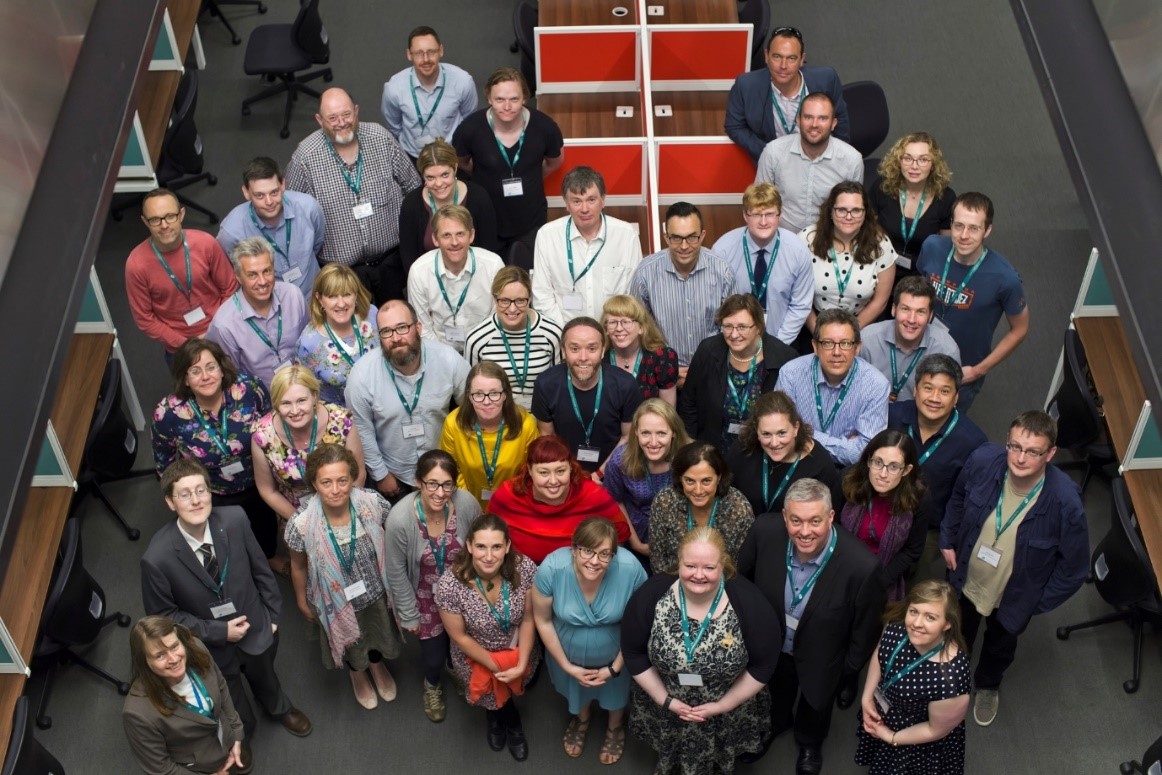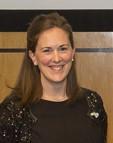Connecting the Bits is one of the most important dates on the DPC calendar. It has changed over the years as the DPC has grown: initially just an extended working lunch for a small group of practitioners, it has grown to involve the whole of the Coalition’s membership. It is an opportunity for ALL members (whether Full Members or Associate Members, on the Board, Representative Council, Sub-Committee or none of those) to share their experiences with each other, identify shared challenges, and have a say in what we should do over the following 12 months.
For the last few years Connecting the Bits has been structured as an unconference. This structure has allowed members to speak in detail and candidly about their plans. This is important for the DPC as it allows us make sure our workplans are focussed very precisely on the needs of our members, and by extension the wider digital preservation community.

Super smiley member faces at Connecting the Bits 2018 in Glasgow
Feedback about the process has always been positive and our sense is that Connecting the Bits events have been an important way to ensure our activities are relevant.
There were just under 40 members when the first unconference met: and now the DPC comprises just under 90 organizations across the world. So, although the process has worked, the question as always is how can we continue to ensure its effectiveness through a period of growth. The Coalition needs to adapt this process to meet the practical constraints of members who may not be able to travel to join a face to face event, whilst continuing to enable every member to have their say.
The Unconference has always allowed Full Members to set the context for the discussions, contributing topics for future work, by a series of brief introductory statements. In the last couple of years, we have seen a number of Full Members deliver their contributions remotely. But the introduction of google docs for remotely collating discussion notes hasn’t been so successful, with little uptake from members who had not attended the event in person.
So, we are going to try another approach.
We’re calling it Connecting the Bits 2.0, though it’s probably something like 3.0 or 4.0. In any case we think it will look a bit like this…

We are going to try this process online over a series of events and opportunities for interaction and feedback over a three-month period, as follows:
May 2019
As usual, Full Members will contribute:
- 1 recent success story from their organization,
- 1 key digital preservation challenge likely to surface in the next 5 years, and
- 1 notable example of upcoming work (which may or may not be affected by that challenge).
The difference will be that these presentations will be collated and shared with the Coalition as a series of pre-recorded lighting talks, made available for members (and us) to watch online.
Those familiar with the Connecting the Bits event will know that following these introductory presentations from Full Members, William, Paul, Sharon and Sara form a huddle during the tea and coffee break to extract the key and common themes which have emerged throughout that first session.

A huddle in progress
Instead of huddling over a tea break – we may give ourselves a little longer – the DPC staff will all meet to extract this year’s themes and present them back to our Sub-Committees as a set of discussion topics.
Early June
Taking their allocated discussion topics, the Sub-Committees will then meet to discuss and prioritize a set of activities which address them.
Once the Sub-Committees have devised their wish lists, the DPC team will meet again to collate this information into a first draft of our outline programme of work for 2019 – 2020. Where lists of ideas/outputs/activities arise for prioritization, we will turn this back out to the membership at large for input using an online collaboration/voting tool before that happens.
Meanwhile, our DPC Supporters will present details of products, services and any updates to their offerings they would like to share with members as a short series of Digital Preservation Futures webinars.
Seeing how member needs manifest themselves through the challenges identified, and comparing needs with some of the available solutions, will also provide the Sub-Committees with an idea of areas which could usefully be addressed by the DPC programme, as well as by the Supporters themselves.
Mid/Late June
Further shaping and validation will then take place through a two-pronged approach:
- The rough draft workplan will be presented to the Board for discussion, feedback and further suggestions.
- All other members will be given the opportunity to provide feedback on and help shape the draft in two separate “Members Lounge” specials, timed to ensure that international members around the world will have at least one opportunity of joining at a reasonable time of day
Gathering the feedback from all sources, the DPC Team will then incorporate all further suggestions to produce a final draft programme.
July
And that final draft will be taken to the Digital Preservation Futures Community Forum for final validation. This event was debuted last year with the aim of facilitating communication between Members and DPC Supporters and was held on the day after Connecting the Bits. With Connecting the Bits largely taking place online, Digital Preservation Futures will be scheduled alongside another DPC event in early-July, providing an opportunity for members who are able to travel, and the DPC Supporters, to network and form positive relationships in a face to face forum.
Validated by members in this forum – voila! the DPC Prospectus shall be born of our mutual efforts.
This process is entirely experimental. We want it to be open, honest and inclusive, and for all members to retain the opportunity to feed into the work we do.
So if you’re game, we’ll give it a try.
If you have any questions about how the process will work please contact paul.wheatley@dpconline.org or sarah.middleton@dpconline.org










































































































































